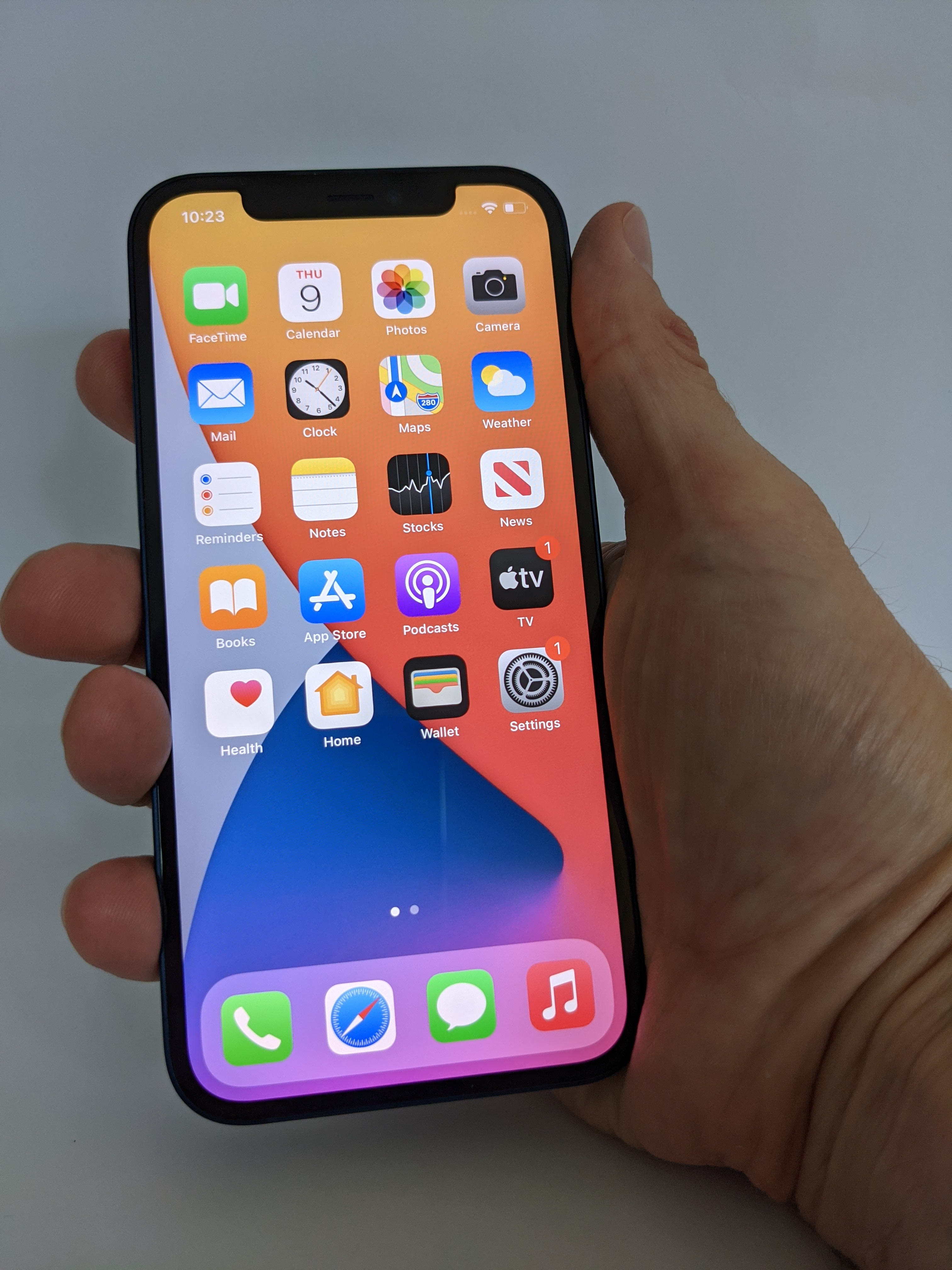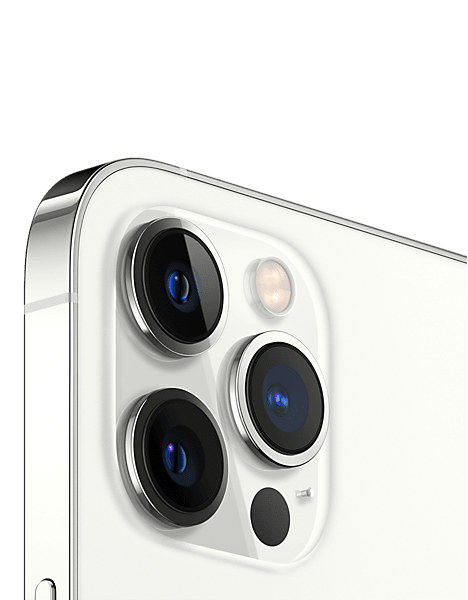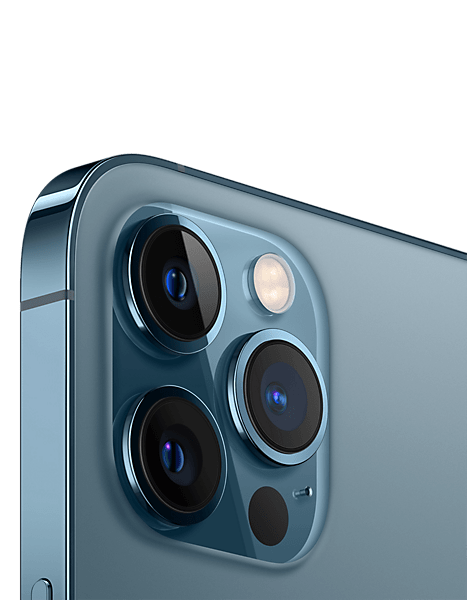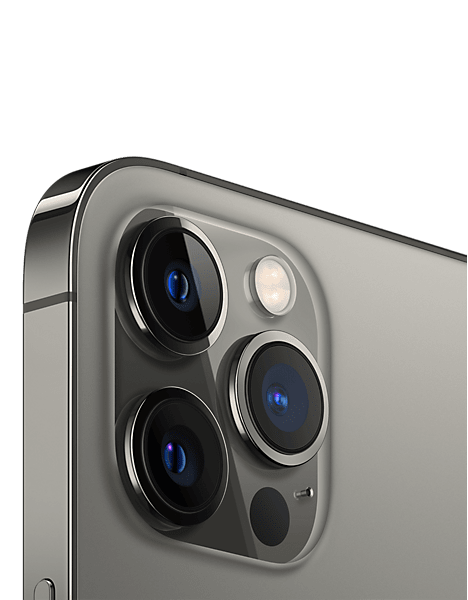
The iPhone 12 Pro is a phone for anyone who wants more than a basic iPhone, but isn’t sure about spending top money for the iPhone 13 Pro. It offers significant upgrades over the standard iPhone 12 camera system, and there’s more storage, too. Is it still worth buying now it’s no longer the latest thing? Dig deeper in our iPhone 12 Pro review.
Pros
- Brilliant design
- Exceptional photo and video features
- Blistering performance
Cons
- Gets warm when working hard
- No longer the latest iPhone
- You can’t buy it new from Apple
Quick links:
iPhone 12 Pro – overview
The iPhone 12 Pro was always the iPhone 12 for people who wanted a little more. It’s been discontinued now that the iPhone 13 Pro has launched, so a reconditioned iPhone 12 Pro is now appealing if you want Pro features at a lower price.
While the iPhone 12 Pro is the same size as the regular iPhone 12, it has more storage, a better camera system, and some useful but subtle enhancements to its photo and video toolbox. It also comes in a choice of four classy colours unique to the iPhone 12 Pro and iPhone 12 Pro Max. Entry models have 128GB of storage, but there are 256GB and 512GB options, too.
When new the iPhone 12 Pro cost about £300 more than the equivalent standard iPhone 12, so it’s perhaps surprising that its screen, processor and battery are all identical. Still, that means you get a 6.1” OLED with 460 pixels per inch, and a claimed 17-hour battery life when watching movies. Perhaps more importantly, the iPhone 12 Pro is powered by Apple’s mighty A14 Bionic chip. But now the iPhone 13 Pro has even more power, is the iPhone 12 Pro a sensible choice?

iPhone 12 Pro – design
The iPhone 12 Pro is almost indistinguishable from the standard iPhone 12. Spotters might notice the unique Pro colours – Pacific Blue, gold, graphite or silver – or that it’s all of 25 grams heavier, thanks to a stainless steel frame. In truth, the most obvious giveaway is a third camera plus an extra sensor on the back – we’ll cover those in the camera section, below.
Apple has pushed its bezel-free design to the limit with the iPhone 12 range, where the screen glass extends very nearly to the edge of the device. It lies flush with, and still protected by a thin metal border. The sides are straight, rather than a more typical curve, which looks distinctive but makes the phone less comfortable to hold. While the front glass is the much lauded Ceramic Shield, the rear is the same type used on earlier iPhones. Here it’s frosted, compared to the shiny finish on the standard iPhone 12 and iPhone 12 mini.



iPhone 12 Pro– display

The iPhone 12 Pro gets exactly the same 6.1” Organic LED (OLED) display as the iPhone 12. Its 2,532×1,170 pixel resolution gives it an impressive 460 pixels per inch (ppi). That translates to super-sharp detailing – you simply can’t spot any jagged lines with the naked eye. Like most OLED screens, the iPhone 12 Pro offers vivid colours, enhanced by exceptional contrast. Typically, a fully white pixel is around two million times brighter than a fully black one.
It’s a great screen, but it’s spoiled somewhat by the notch housing the speaker and front-facing camera. This sizable black bite out of the display isn’t noticeable in everyday use, but it puts more of a dent in full-screen media than the small cutout favoured by most rivals. Many reviewers have complained that the iPhone 12 Pro doesn’t have a 120Hz refresh rate – the iPhone 13 does, and it has a smaller camera notch, too.
Apple will charge you £266 to replace this phone’s screen, so it’s a good job that Ceramic Shield largely lives up to its billing. Testers have generally found that the new glass can be scratched, but it’s very hard to shatter it in a drop. It’s worth noting that doesn’t apply to the weaker glass at the rear – we’d still recommend a case.
iPhone 12 Pro – camera and video performance
Most of the iPhone 12 Pro’s improvements over the standard iPhone relate to its camera. Most significantly, it’s a triple system, offering a telephoto lens in addition to the iPhone 12’s wide and ultra-wide setup. Intriguingly, the iPhone 12 Pro also sneaks in LiDAR technology, used for creating depth maps. Apple says it’s used for a unique night portrait mode, ‘next-level augmented reality experiences’, and to accelerate autofocus in dim light.
There are some subtle feature changes, too. Aside from the Night mode portraits, the phone’s Dolby Vision HDR video capability is boosted from a 30 to 60fps maximum. You can save photos in Apple’s ProRAW format, enabling more exacting edits and higher quality results. With an extra lens, the optical zoom range is doubled to 4x, and the digital zoom to an impressive 10x. At the front, however, there are no changes – you get the same 12MP camera and features as the iPhone 12.
There’s precious little wrong with the iPhone 12 cameras, but the iPhone 12 Pro does manage to improve on them. Most immediately you’ll notice the additional zoom range, with telephoto helping you fill the frame with more of the subject. Night performance is strong on the standard iPhone, but the iPhone 12 Pro takes it to another level. It’s capable of resolving images in the kind of light that has you bumping into bedside cabinets. Somehow it conjured up a decent portrait in a bathroom lit only by another phone’s screen.
With optical image stabilisation, the iPhone 12 Pro shoots steady video – even when using the telephoto lens in low light. And as with other recent iPhones, abundant processing power means that you’re never waiting for the phone to process one shot before capturing the next.
While there’s no doubt this phone has a great camera system, Apple has comprehensively improved on it with the iPhone 13 Pro and iPhone 13 Pro Max. If outright photo and video performance is important, try to stretch your budget to the latest models instead.
iPhone 12 Pro– performance
Geekbench 5 results
CPU single-core scores:
- iPhone 13 Pro – Score= 1,746
- iPhone 13 – Score = 1,723
- iPhone 12 Pro – Score = 1,603
CPU multi-core scores:
- iPhone 13 Pro – Score= 4,899
- iPhone 13 – Score = 4,612
- iPhone 12 Pro – Score = 3,967
3DMark Wild Life Extreme results
Best scores:
- iPhone 13 Pro – Score= 3,118
- iPhone 13 – Score = 2,523
- iPhone 12 Pro – Score = 2,216
Worst scores (20-minute loop):
- iPhone 13 Pro – Score= 2,235
- iPhone 13 – Score = 1,983
- iPhone 12 Pro – Score = 1,595
While leading Android phones run the iPhone 12 Pro close for camera, screen and design quality, show them a benchmark and it’s a different story. Apple’s A14 Bionic chip was the fastest available until the iPhone 13 launched, and the iPhone 12 family will still outperform anything other than the new iPhones. In Geekbench 5 the iPhone 12 Pro recorded a single-core score of 1,603 and a multi-core result of 3,967 – more than 15% faster than the Samsung Galaxy S21.
The iPhone 12 Pro is even more dominant in 3D benchmarks. We recorded a score of 7,929 in the 3DMark Wild Life stress test. That’s fully 31% better than even the Huawei Mate 40 Pro+.
It’s important to explain that most phones don’t have cooling fans, so it’s hard for them to sustain flat out performance on really power-hungry apps without getting warm and having to slow itself down.
iPhone 12 Pro– battery performance
According to Apple, the iPhone 12 Pro offers the same battery performance as the standard iPhone 12. It should last up to 17 hours playing video, or 11 hours streaming it. In our test, it held on for just over 14 hours of looping playback. That’s 17 minutes longer than an iPhone 12, but almost four hours short of the bigger-batteried iPhone 12 Pro Max. Apple also says that the iPhone 13 Pro will play video for 22 hours – a useful improvement.
In normal use the iPhone 12 Pro battery comfortably lasted for a day, but with lots of video or gaming you might need to grab a top-up. With a 20W charger, you can add plenty of power in just a few minutes. The empty iPhone 12 Pro took two and a half minutes to turn on. It then hit 50% in 28 minutes and went on to reach 80% in just 51 minutes. The full charge took an hour and 48 minutes.
Battery life (movie playback)*
- iPhone 13 Pro – Time = 19hr 2mins
- iPhone 13 – Time = 18hrs 46mins
- iPhone 12 Pro – Time = 14hrs 07mins
Charge Time (0-80%)
- iPhone 13 Pro – Time = 53mins
- iPhone 13 – Time = 55mins
- iPhone 12 Pro – Time = 51mins
*Battery life test involves looping the playback of an HD movie from fully charged until the phone shuts down.
iPhone 12 Pro – options and additional features
Apple lets you choose your iPhone 12 Pro in one of four colours only available on the Pro or iPhone 12 Pro Max. Together with the frosted back glass, the result is a slightly classier, more professional look overall. The cheapest iPhone 12 Pro has a useful 128GB, while the maximum 512GB should be enough to store entire video projects, photo and music collections, and more.
Despite the phone’s premium price, you’ll need to pay extra for a charger or headphones. In the box there’s just a Lightning cable with USB-C on the other end – it won’t fit in the standard USB ports found in cars, laptops and most chargers.
Since the iPhone 8, all iPhones have been compatible with Qi wireless chargers. The iPhone 12 continues the tradition, adding a new MagSafe system designed to help quickly and securely snap the phone to accessories and chargers. Tossed onto a car charging pad, the iPhone 12 Pro charged without issue.




iPhone 12 Pro – build quality and things to look out for
The iPhone 12 has been refreshingly free of the scare stories associated with some iPhone launches. Users have noticed that 5G reception can hammer the battery life, but you can turn it off from Settings>Mobile>Mobile Data Options>Voice & Data.
While the Ceramic Shield front glass should protect the screen from drop damage, it’s still easy to scuff up the stainless steel body. It’s also easier to smash the weaker rear glass. Though it’s a shame to disguise such an expensive and stylish phone, we’d always recommend a case.
Mobile phone batteries tend to give a couple of years’ service before you’ll notice any drop in performance. Once the battery starts to age, iOS will show you the remaining capacity – open the Settings app, choose Battery and select Battery Health. You can extend the iPhone battery’s working life by ensuring Optimised Battery Charging stays enabled.
iPhone 12 Pro – verdict
The iPhone 12 Pro is definitely a better phone than the iPhone 12, but there’s surprisingly little in it. With the same screen, processor and battery, the main differences are subtle design changes, and an improved camera setup. There’s a much bigger gap between the iPhone 13 and iPhone 13 Pro.
Previously it was questionable whether the iPhone 12 Pro was worth having over the standard iPhone 12. However, now that it’s been discontinued, a refurbished iPhone 12 Pro makes a lot of sense. If you’re looking for a 5G iPhone with great cameras for less than a new iPhone 13, a second-hand iPhone 12 Pro could be the perfect choice.
